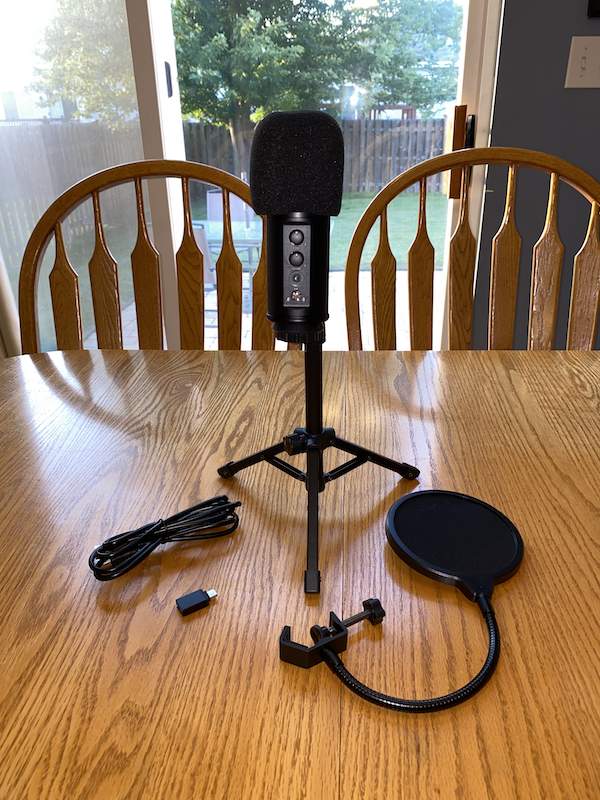
REVIEW – George Lucas said, “Sound is 50 percent of the moviegoing experience.” You may not be making the next Star Wars film, but if you’re streaming games, in endless Zoom calls for work, recording your own music, or just wanting better audio for whatever project you’re doing, a good microphone is critical. The KMAG M11 USB microphone is a good low-cost option for capturing audio for your next media project.
What is it?
The KMAG M11 USB Microphone is a tube-shaped condenser microphone with a cardioid polar pattern. A cardioid pattern means it picks up sound from the front and sides of the microphone but rejects most sound coming in from the back. This is a pretty typical microphone pickup pattern compared to the usual omni mics in a laptop or phone, which pick up sound from any direction, potentially increasing noise and background sounds in your audio recordings.
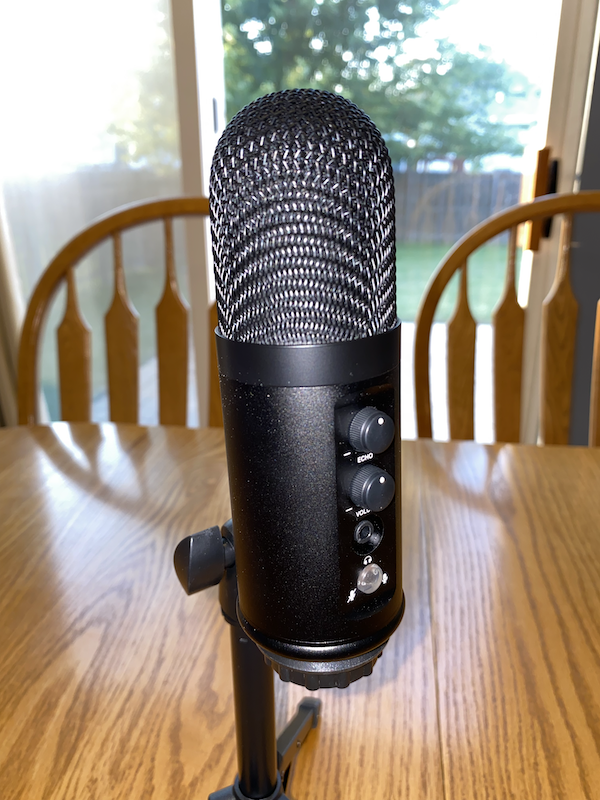
What’s in the box?
- KMAG M11 USB Microphone
- Foam Windscreen
- Tripod Microphone Stand
- Pop Filter
- USB-A to USB-B Cable
- USB-A to USB-C Adapter
- User Manual
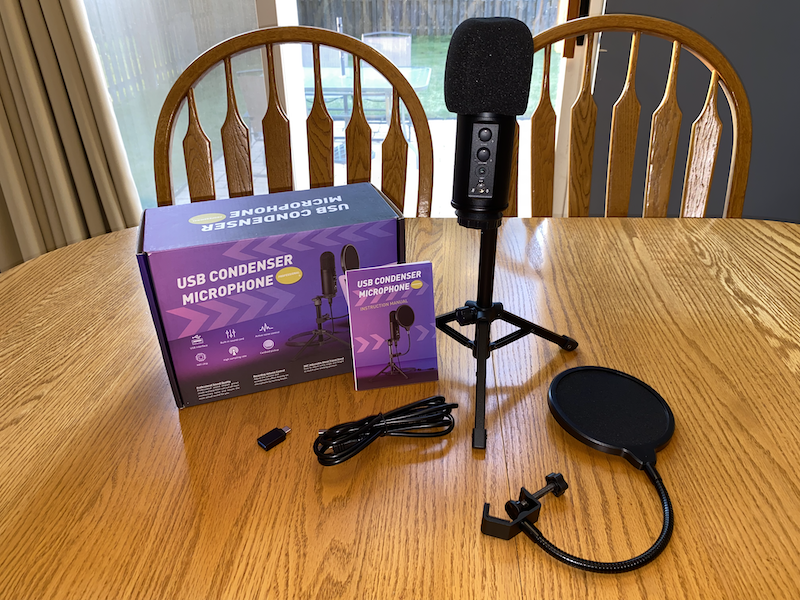
Hardware specs
- Sampling Rate: 48 KHz
- Bit Rate: 24 bits
- Microphone: 16mm large diaphragm condenser
- Polar Pattern: Cardioid
- S/N Ratio: 90 dB
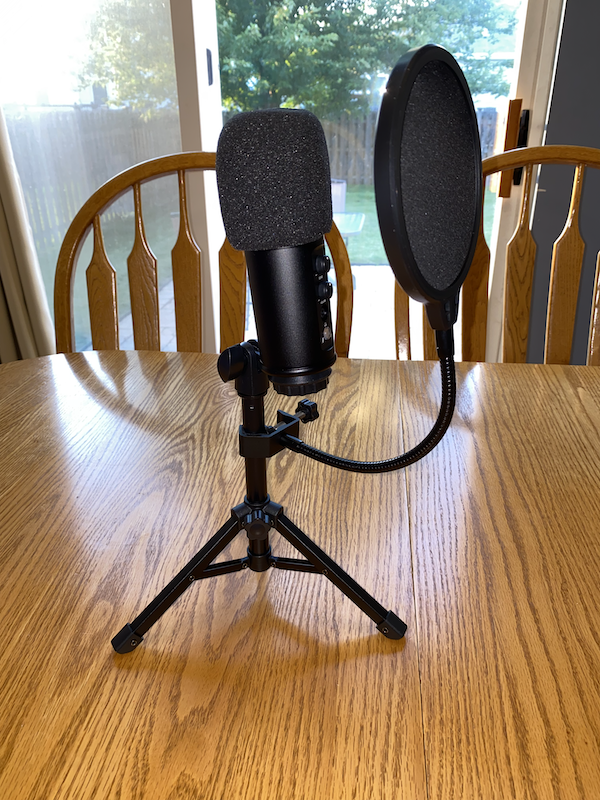
Design and features
The KMAG M11 USB Microphone is tube-shaped, black, aluminum device, 4.3″ long. The microphone, stand, and pop filter feel solidly built. The screws that are used to tighten the stand and pop filter are made from plastic so you’ll want to be careful but otherwise this does not feel cheap.
The microphone has a volume knob and an echo knob. Volume is used to increase or decrease the amount of volume that will be recorded. Echo adds reverb to your voice as it gets recorded. In a post-production setting, you would normally add this after the voice is recorded during the mixing process but for a live stream, if you have a need to add reverb to your voice or instrument, this would be a convenient way to do it.
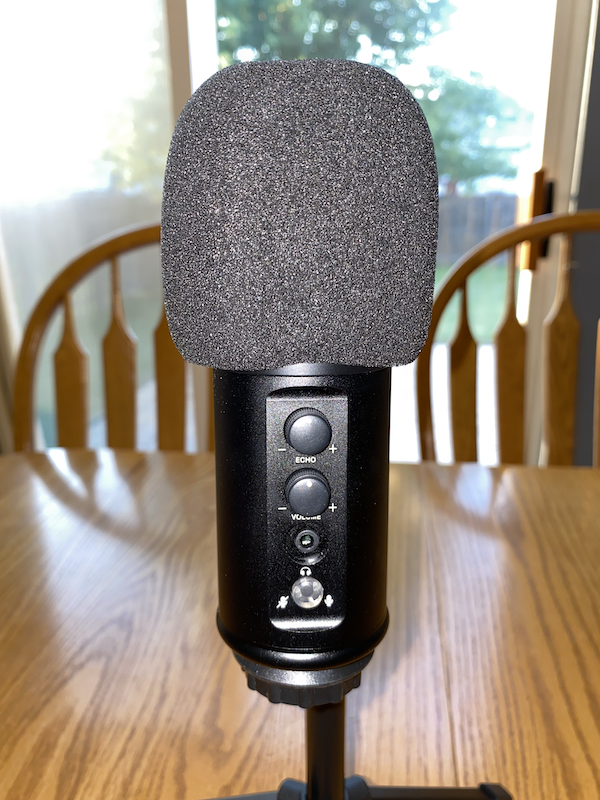
There is also a headphone jack on the microphone for listening to your audio without the delay inherent in listening to the audio output from your computer.
The last control on the KMAG M11 USB Microphone is a button. This button can be used to turn the microphone on and off (for instance if you don’t want to be heard during a Zoom call). This button is also used to activate noise reduction; simply hold the button for three seconds to turn it on, and three seconds again to turn it off.
Installation and setup
Installation is as easy as plugging in the USB cable (and the USB-C adapter if needed for your device). Once recognized by the computer, it will show up as a separate input and output device, each labeled M11 (allowing use of the microphone as input and the headphone output).
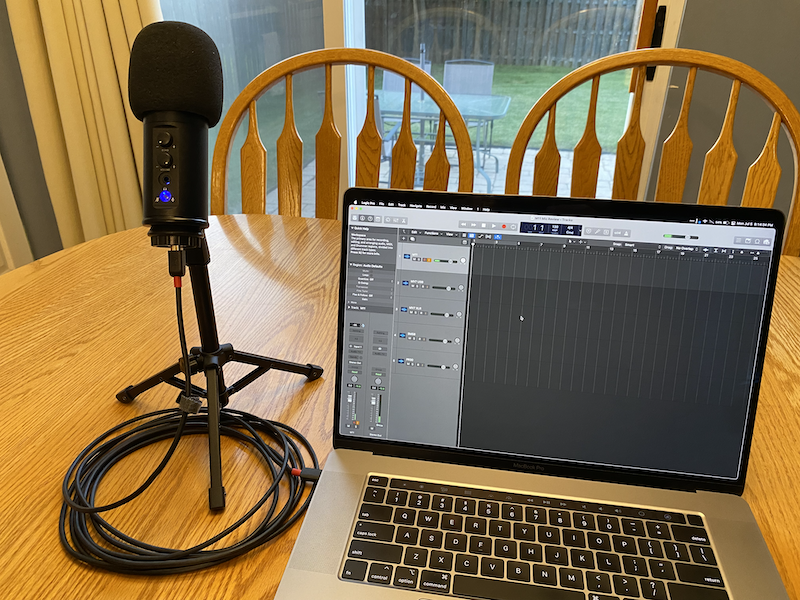
When I first plugged the KMAG M11 USB Microphone into my MacBook Pro with the included USB cable and USB-C adapter, I would get audio for a few seconds, then a weird, distorted sound, then nothing. I had to unplug the microphone and plug it back in again to get audio back. This happened several times, and also with another cable I had, but I was ultimately able to get clean audio out of the microphone and recorded the sample included in this review. I’m not sure if this is just a problem with this specific microphone or if all of these would have the same issue. I’m guessing it’s a problem with my setup somehow but I’m not totally sure.
The KMAG M11 USB Microphone is also compatible with some phones and tablets that support USB-C.
I made a test recording with this microphone as well as one with a Shure MV7, a popular, new USB microphone for podcasting and video work. I attempted to record two other XLR microphones with an audio interface but I couldn’t get it to work with my computer.
KMAG M11 USB Microphone audio sample:
Shure MV7 audio sample:
What I like
I like the feel of the KMAG M11 USB Microphone, the weight, the included accessories, and the ease of use of plugging it in and recording, the built-in headphone output for monitoring audio without an echo, and the reverb option.
What I’d change
There isn’t much I would change about the M11 microphone. I’m not totally sure how useful reverb is on a microphone like this. I would maybe take away the reverb knob and put a headphone volume knob there instead.
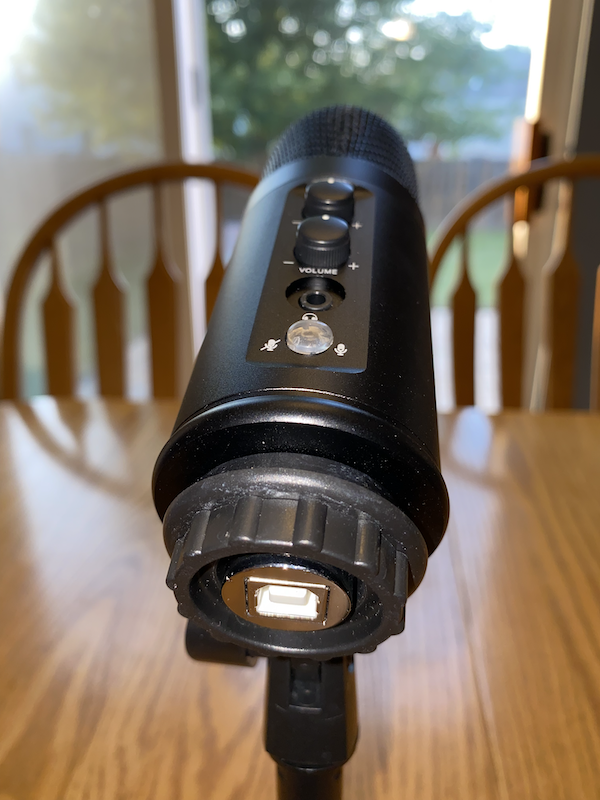
Final thoughts
For the price, the KMAG M11 USB Microphone is a good contender for an external microphone to get you better quality audio than the one built into your laptop or headphones. Considering the importance of audio quality in a video conference, a YouTube video, a game stream, or that next blockbuster movie, this is a good place to start improving the quality of your production.
Price: $29.99
Where to buy: Amazon
Source: The sample for this review was provided by KMAG.



Gadgeteer Comment Policy - Please read before commenting
How did you manage to solve the problem with distorted sound? I have a problem with this microphone